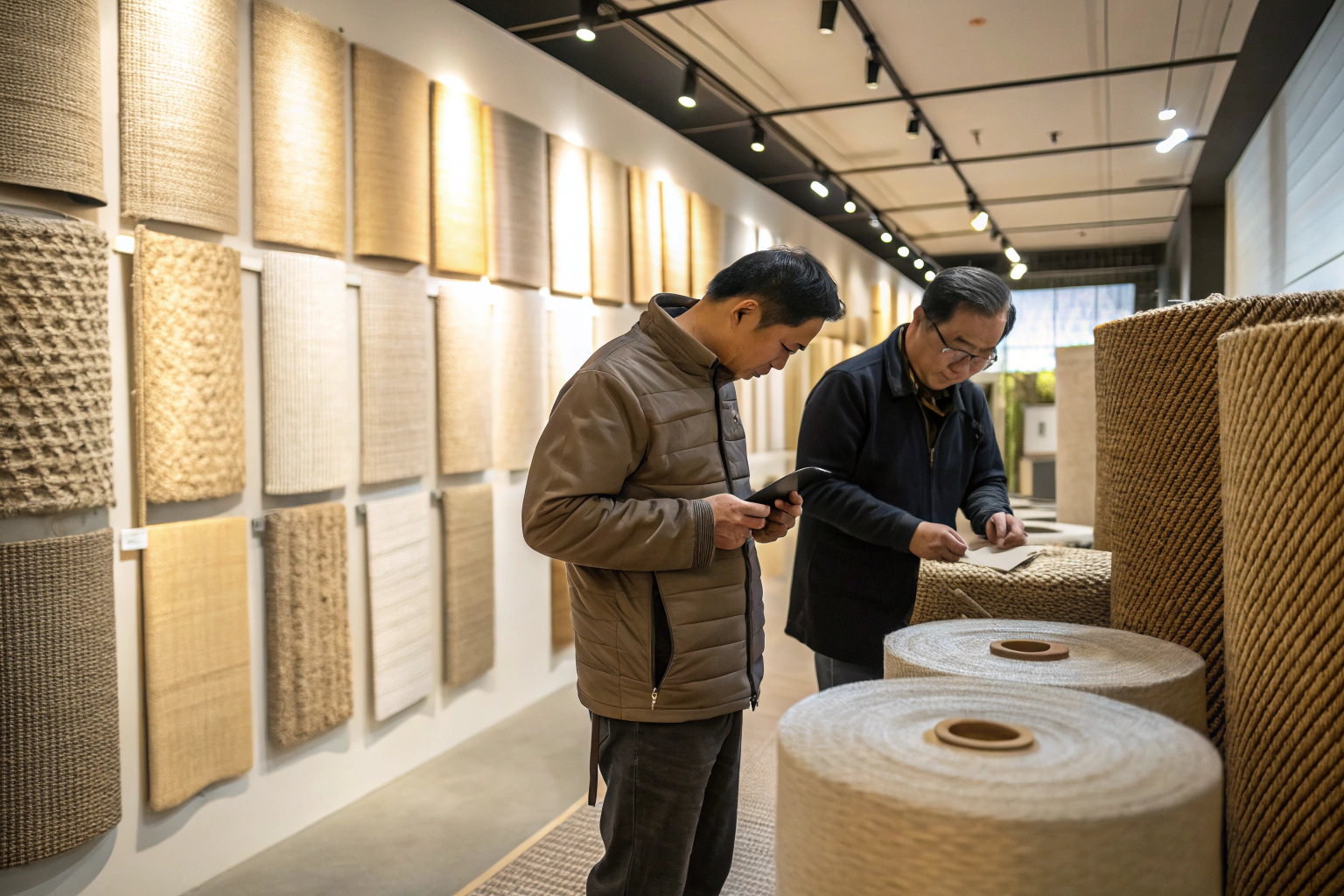I know the noise problem never waits. You need acoustic panels that calm an office, a studio, or a restaurant. You also want materials that match a sustainability promise. Many buyers search, compare quotes, and still end up with foam that smells or sheds. I run a mill-to-market fabric company in Keqiao, China. I make this choice simple. I show you where to source hempcrete-infused acoustic panel textiles that perform, test well, and ship on schedule to the U.S.
You can find hempcrete-infused acoustic panel textiles from specialized natural-fiber mills and integrators in China, plus select innovators in the U.S. and EU; the fastest route is a Keqiao supplier that weaves hemp/bast fabrics, laminates with breathable backers, and coordinates panel pressing with hempcrete cores, all supported by third-party acoustic and fire tests.
I will walk you through the real supply routes, the tests that matter, and the trade-offs with alternatives. I also show how I quote, sample, and ship. I keep the language plain. I add links you can open to double-check standards and methods. When you finish, you will know where to buy, what to ask, and how to get panels produced without drama.
Top Suppliers of Hempcrete Acoustic Fabrics
You want a short list and a clear path. I source bast-fiber fabrics and panel skins from our weaving partners in Keqiao, and I integrate with hemp-based core makers. I vet spinning, weaving, dyeing, and lamination on one campus so you do not lose time to handoffs. I keep MOQs practical for pilots. I keep color lots tight for roll-to-panel consistency. I price clearly and update sailing schedules in one page.
The most reliable way to buy hempcrete-ready acoustic textiles is to use a one-stop Chinese cluster supplier in Keqiao that can weave hemp/hemp-blend face fabrics, apply low-VOC coatings, and ship roll goods or finished skins to your panel press—backed by acoustic and fire certificates you can reference during import and build.
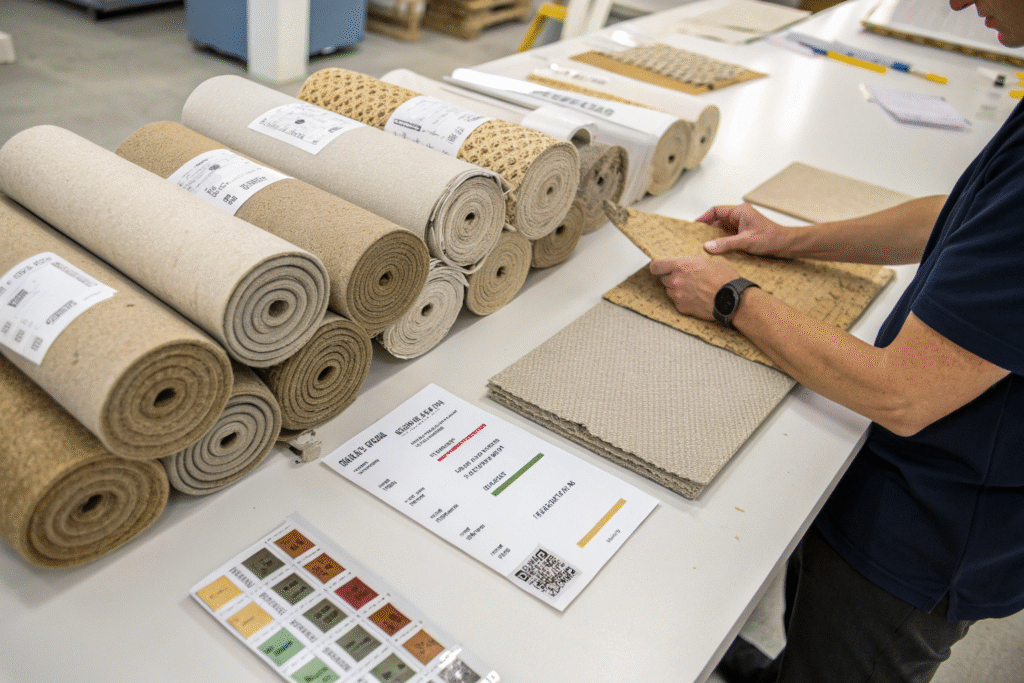
I match two buyer profiles. First, the fabric-only buyer who needs durable, breathable skins for in-house panels. Second, the turnkey buyer who wants cut-and-wrapped skins delivered by the pallet. I coordinate both. I keep data sheets in English. I map every meter with QR codes for composition, finish, shrinkage, and color. I quote lead times that hold even during peak seasons, because I control weaving, dyeing, coating, printing, embroidery, and packaging inside our network.
Where are the credible hemp panel innovators today?
I start with a scan of the innovators that push hemp materials into construction and interiors. I benchmark cores against lab standards and compare surface fabrics by abrasion and lightfastness. I also study the VOC guidance that architects ask for. You can see how the broader market defines hemp construction in public references like Hempcrete and how designers discuss sound absorption fundamentals. I do not copy them. I translate them into specs that a purchasing team can use. I keep the discussion practical—panel size, wrap radius, staple behavior, corner folds, and field repairs. These details decide whether a fabric belongs in a panel line.
Can Keqiao supply chain actually cut your project risk?
Yes, because the cluster compresses decisions. I place weaving, dyeing, lamination, coating, and inspection within a short drive. I add embroidery when a brand needs micro-perforation patterns without losing airflow. I audit each factory, and I run spot tests with independent labs when you need an external stamp. For your compliance file, you can cross-check textile ecolabels like OEKO-TEX Standard 100 and building program signals like LEED by USGBC. This structure speeds sampling. It also keeps bulk delivery steady when you scale a chain of hotels or retail stores.
How to Verify Acoustic & Fire Ratings?
Testing decides the buy. My U.S. buyers ask two questions: How well does it absorb sound on a panel, and how does it behave in a fire test? I answer with standards, not marketing. I share acoustic results that come from third-party labs, and I match those to the panel construction you plan. I also confirm fire behavior for the textile face and the assembled panel.
For acoustics, I target ASTM C423 (NRC/SAA) on a representative panel build and back it with impedance-tube checks; for fire, I reference ASTM E84 or EN 13501-1 depending on your market, and I specify low-VOC binders to meet common indoor air expectations.
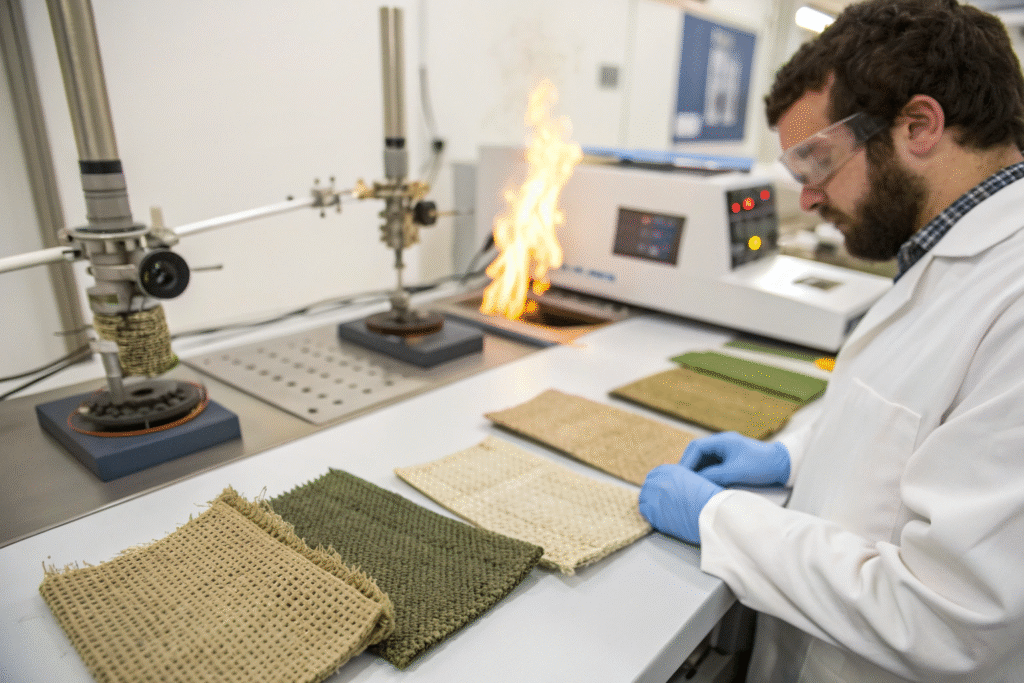
I make testing readable. I map each test to your sales channel: office fit-out, hospitality, education, or residential. I explain what the numbers mean to a client who only hears “NRC 0.85” without context. I remind teams that color, weave density, and backer change results. I do not hide the trade-offs. I show you how to optimize the panel stack for your target octave bands.
Which acoustic metrics should I put on the spec sheet?
I always put NRC and the octave-band absorption graph from a room test on the spec sheet, because buyers recognize those. NRC comes from ASTM C423 procedures, and it summarizes absorption with one number. I add a narrow-tube check when we iterate fabrics early, based on the physics in acoustic absorption. I also list fabric air permeability, fabric thickness, and fabric mass per square meter, because these inputs push mid-to-high frequency performance. If you plan perforated panels, I include open-area ratio and perforation geometry so your engineer can model the stack.
How do I read fire test names without getting lost?
Start with two anchors. In North America, many teams quote ASTM E84 for flame spread and smoke developed. In Europe, many use EN 13501-1 to assign classes. When we select finishes, I pick formulations that support these regimes and keep VOCs low enough to align with UL GREENGUARD. If you want fiber content claims, I add links to ecolabel frameworks such as GOTS for organic fibers when relevant. I pack all reports in your shipment folder, matched to roll IDs.
Sourcing from China: MOQ, Lead Times, Tariffs
You want predictable numbers. I keep MOQs clear for three cases: fabric-only, laminated fabric on a breathable backer, and cut-and-wrapped skins. I book dye lots early to lock color. I print barcodes for every roll and keep a live inventory sheet. I plan shipping with buffers because seasons shift. I also brief you on tariffs and documentation so you avoid surprises at U.S. customs.
Typical MOQs start at 300–800 meters per color for greige-to-dyed fabrics, 500–1,000 meters for laminated skins, and 200–400 panels for wrapped sets; lead times range from 12–25 days for fabric and 20–35 days for wrapped skins, depending on colors, finishes, and booking windows.
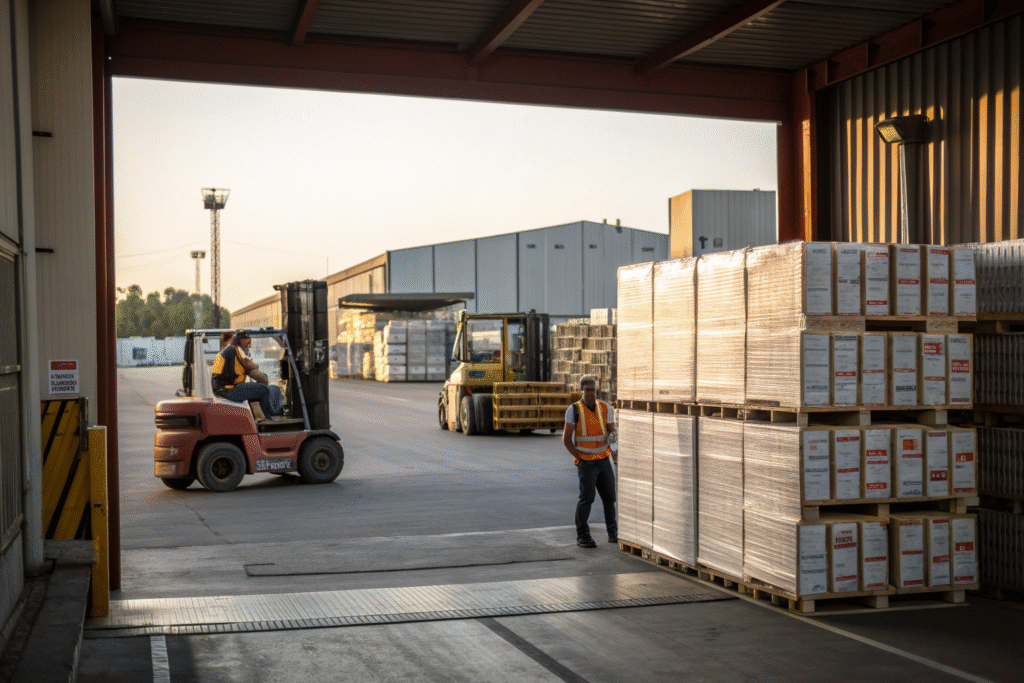
I build quotes that compare FOB, CFR, and DDP so your finance team can pick the control level. I also track 10+2 ISF filings, commercial invoices, and packing lists. I offer mid-volume air options for first articles. I explain how we route through Ningbo or Shanghai based on vessel frequency and your delivery window to West or East Coast.
What should I check before I accept a shipping quote?
Confirm the trade term and who owns risk at each point. You can refresh terms at the International Chamber of Commerce page for Incoterms rules. I line-item the ocean freight, local charges, and destination charges. I check the sailing schedule with carriers like Maersk and match it to your required in-hands date. I also verify carton count, net and gross weights, and HS codes. This prevents demurrage and detention. I keep the packing list consistent with labels, so your 3PL can receive without delay.
How do I estimate U.S. tariffs and customs steps?
I use the correct HTS line for bast-fiber fabrics or finished panel skins. You can search the U.S. database on the HTS USITC site to confirm. I also brief your broker on any duty exclusions or Section 301 notes that may apply to your mix. For import process clarity, I follow U.S. CBP ISF 10+2 guidance and keep data clean from the start. If your brand uses eco claims, I make sure labeling follows FTC textile labeling rules so you avoid relabeling steps after arrival.
Comparing Hempcrete Textiles vs. Alternatives
You will not pick a fabric in a vacuum. I set up a fair comparison between hempcrete-infused panels and other common acoustic solutions. I focus on acoustics, fire, VOCs, durability, and brand story. I do not claim hemp beats every metric. I show where it shines: renewability, breathable touch, and a premium natural story that reads well in hospitality and wellness spaces.
Hempcrete-faced textiles compete strongly in design-led projects that value natural tactility and low-VOC stories; mineral wool and PET felt can hit aggressive budgets and high NRC quickly; the right answer depends on your space, not a slogan.
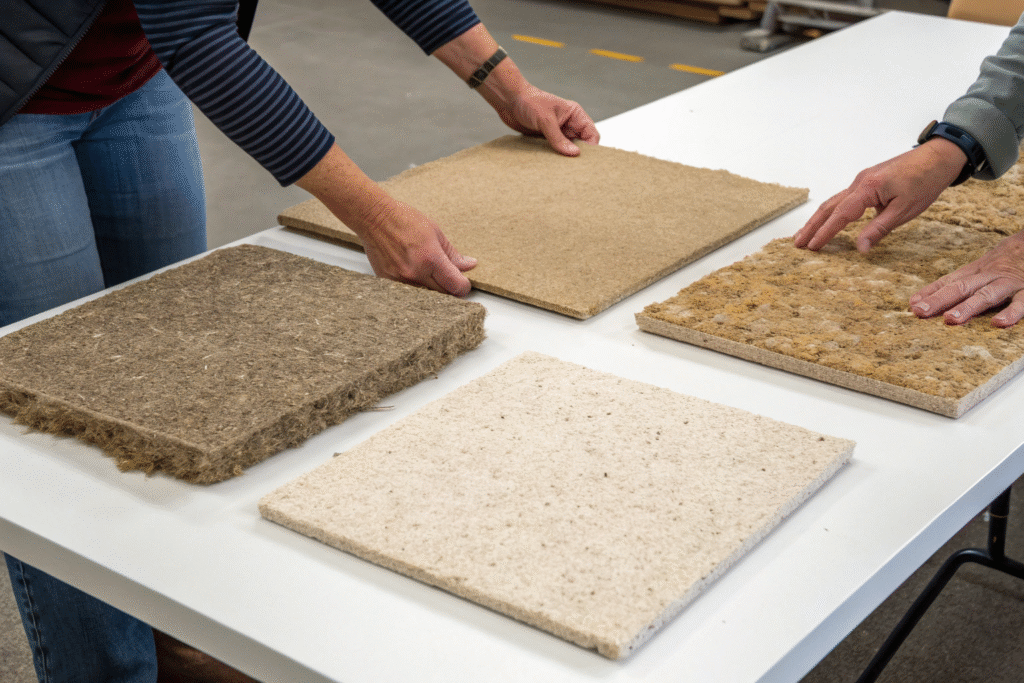
I tune the weave and the backer to help the panel breathe while protecting the core. I also check staple pull-out and corner fold behavior because installers hate cracking. I run abrasion tests to keep the surface fresh in public spaces. I flag cleaning and stain resistance so your facility team stays happy.
Does hempcrete really help with indoor air quality?
Hempcrete is known for vapor openness and thermal regulation when used as a wall system, and that story carries to panel stacks when you keep coatings breathable. You can read background on plant-based binders and IAQ frameworks under LEED and emissions programs like UL GREENGUARD. I do not claim self-purifying panels. I claim low-odor and low-VOC finishes and a natural hand-feel that clients notice. When we spec adhesives, I align with your architect’s material list so you avoid later substitutions.
How does hemp compare with PET felt and mineral wool?
PET felt panels are easy to cut and cost-effective, and mineral wool cores hit high absorption quickly. You can read general properties of mineral wool and recycled polyester to see why. Hempcrete-faced panels add a natural aesthetic, a renewable origin, and a tactile surface that hides minor wear. Fire rating depends on the full stack, not just the fabric, so we test as a system. Cost depends on currency and freight. I often propose hybrid solutions: hemp face on a mineral or recycled core where performance targets are strict.
Conclusion
You asked where to find hempcrete-infused acoustic panel textiles. I showed you the fastest route: use a Keqiao one-stop partner who weaves hemp fabrics, aligns coatings with low VOCs, validates acoustics and fire, and ships on time to the U.S. I compared options, explained tests, and mapped the ordering path. If you want a natural, credible acoustic story with stable supply, I am ready to build it with you.
If you want to co-create your hempcrete acoustic line, contact Shanghai Fumao. Email our Business Director Elaine at elaine@fumaoclothing.com. I will prepare swatches in 48 hours and a plan that fits your brief, budget, and timeline.

